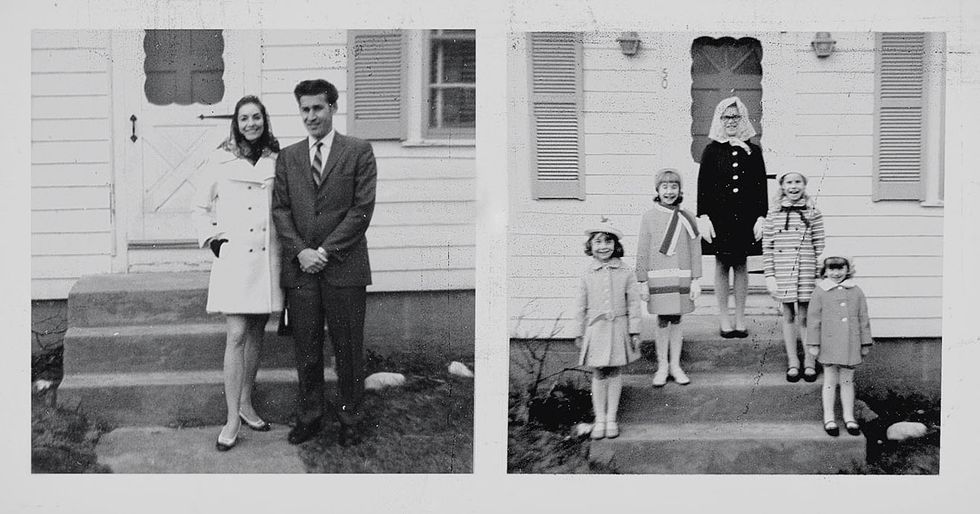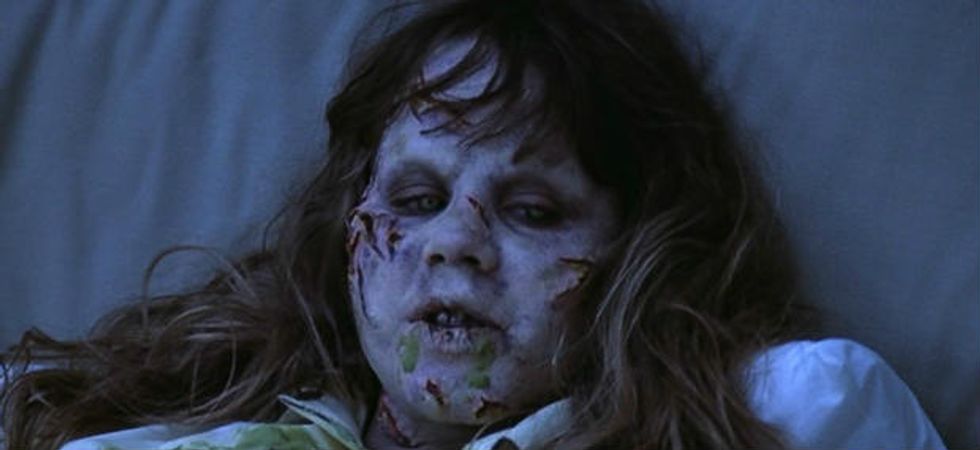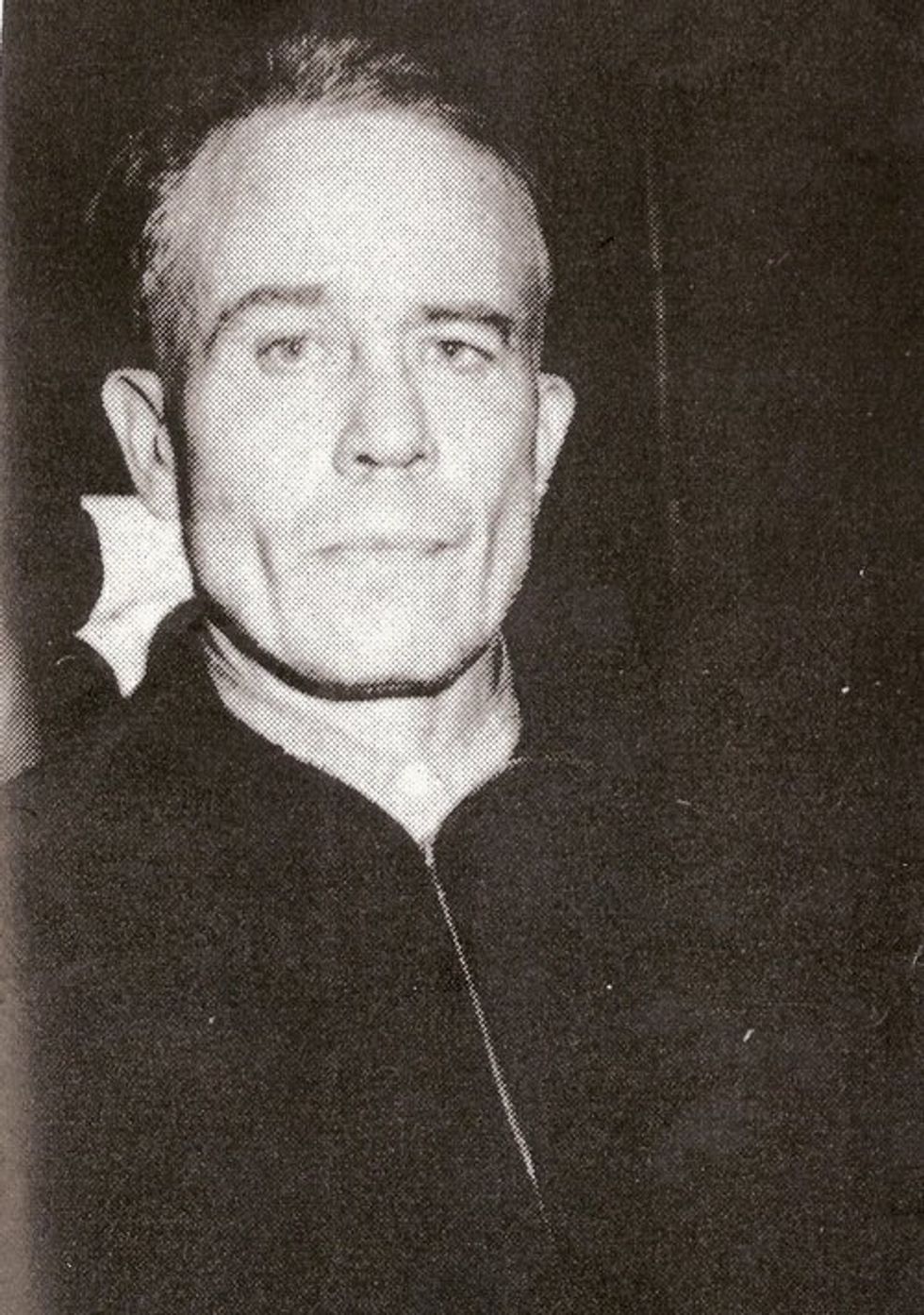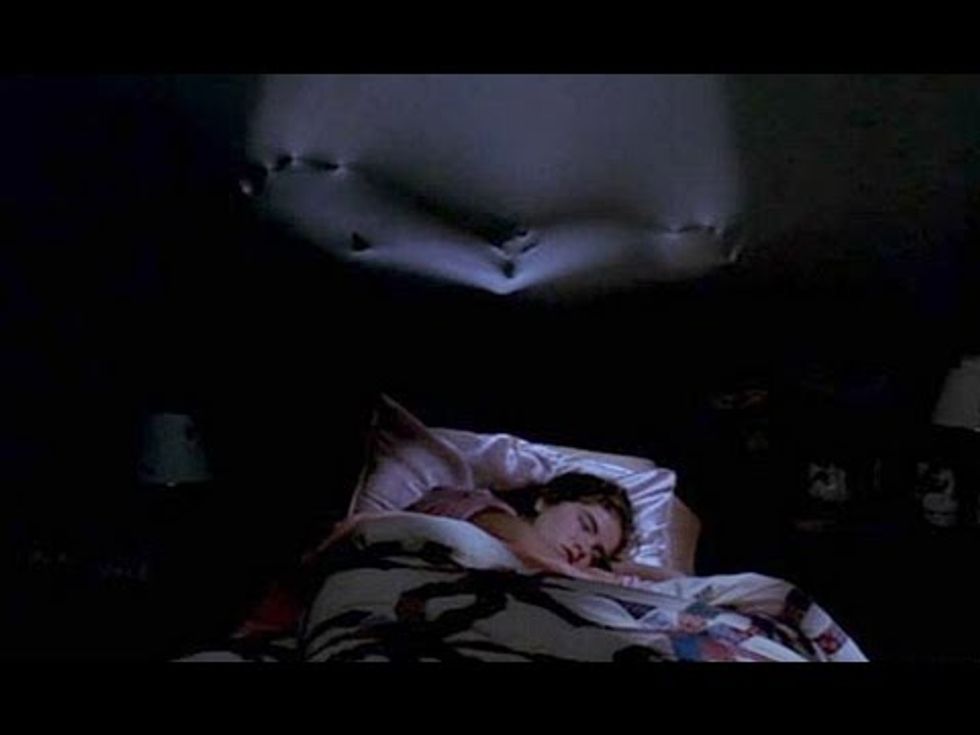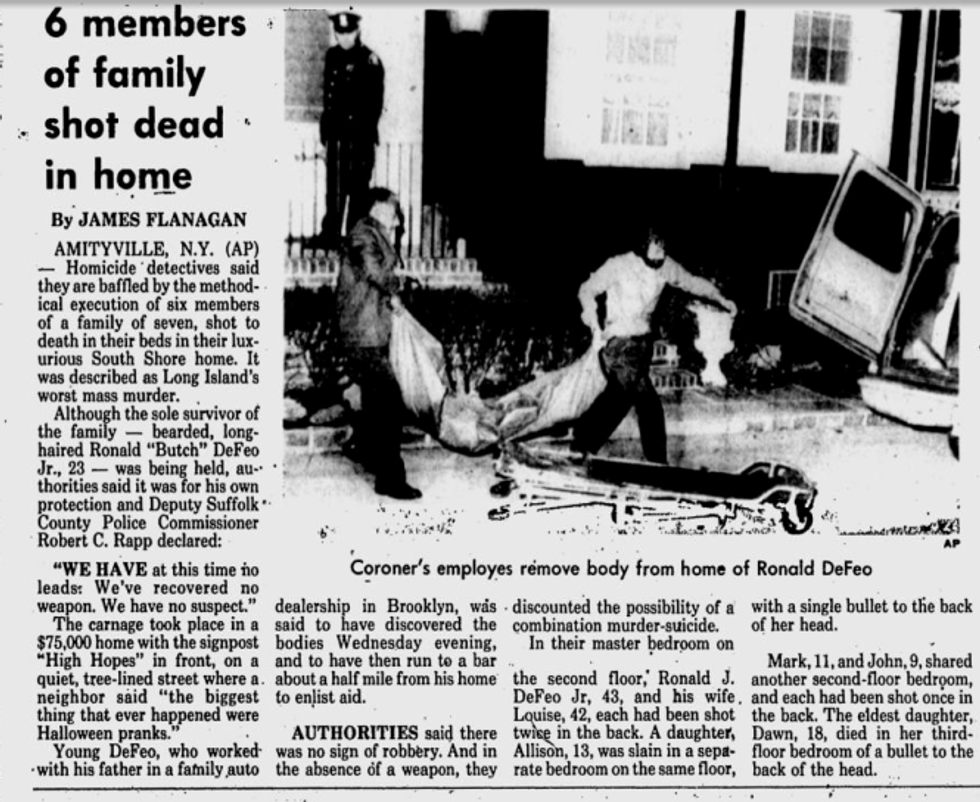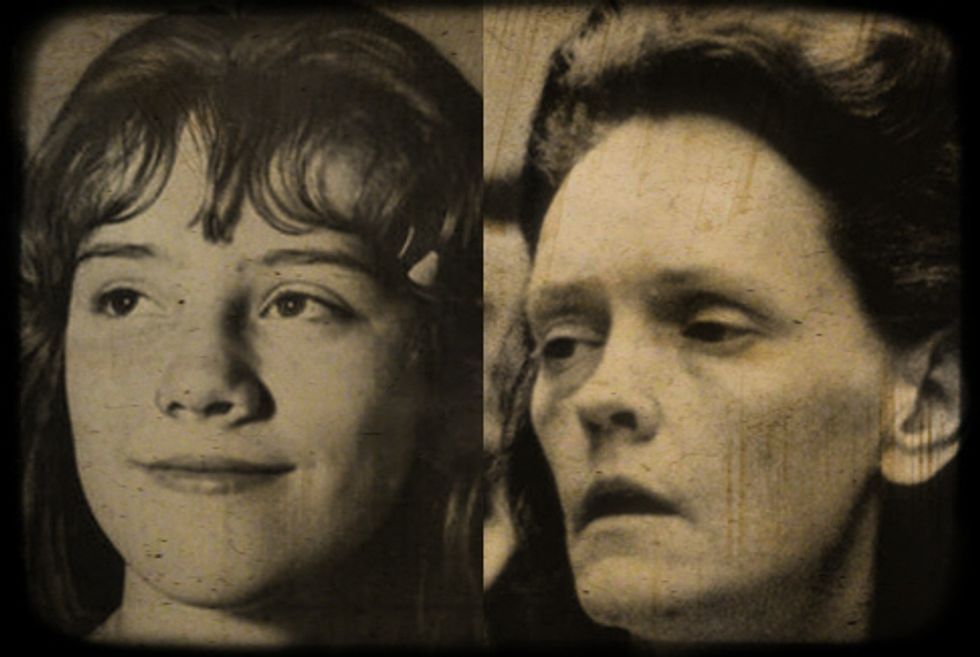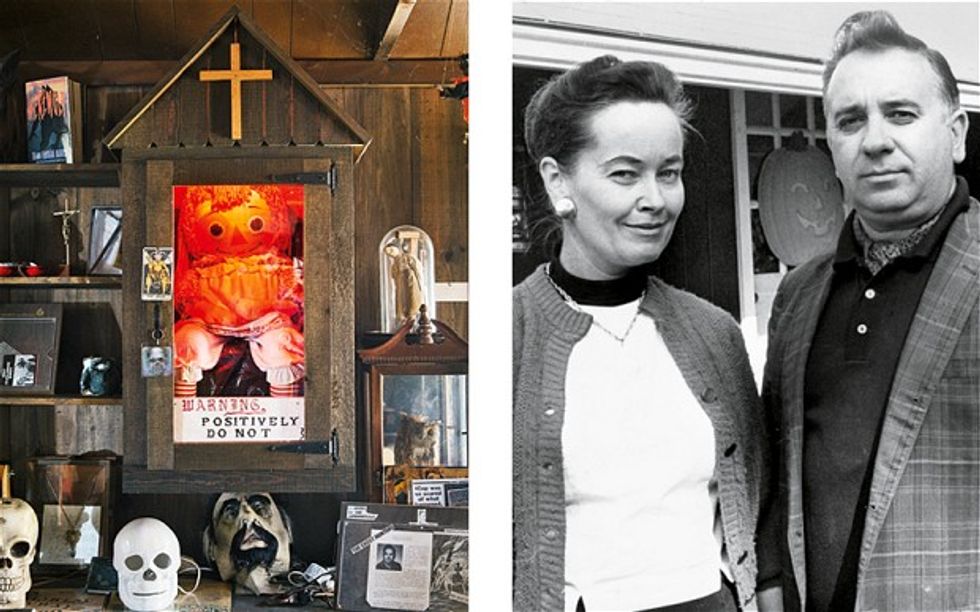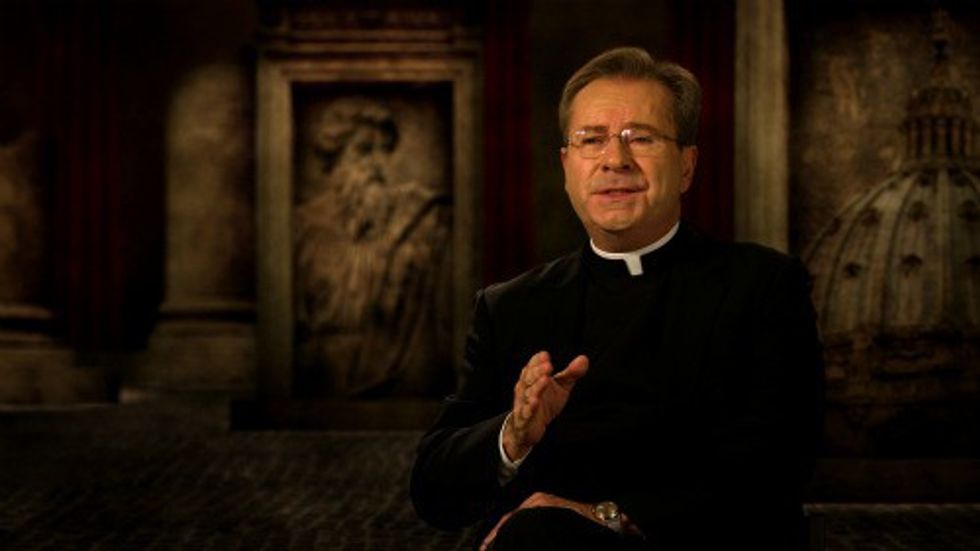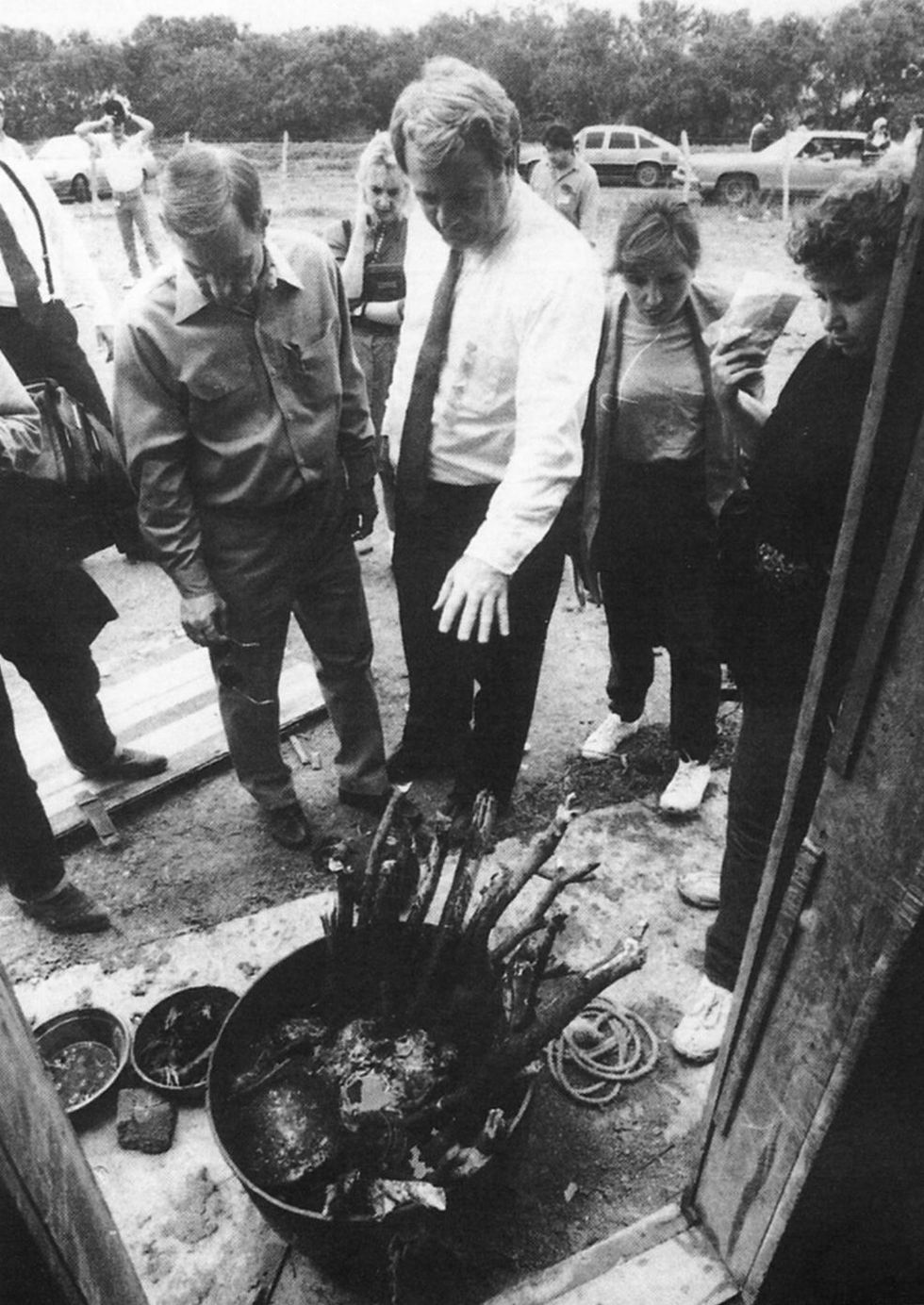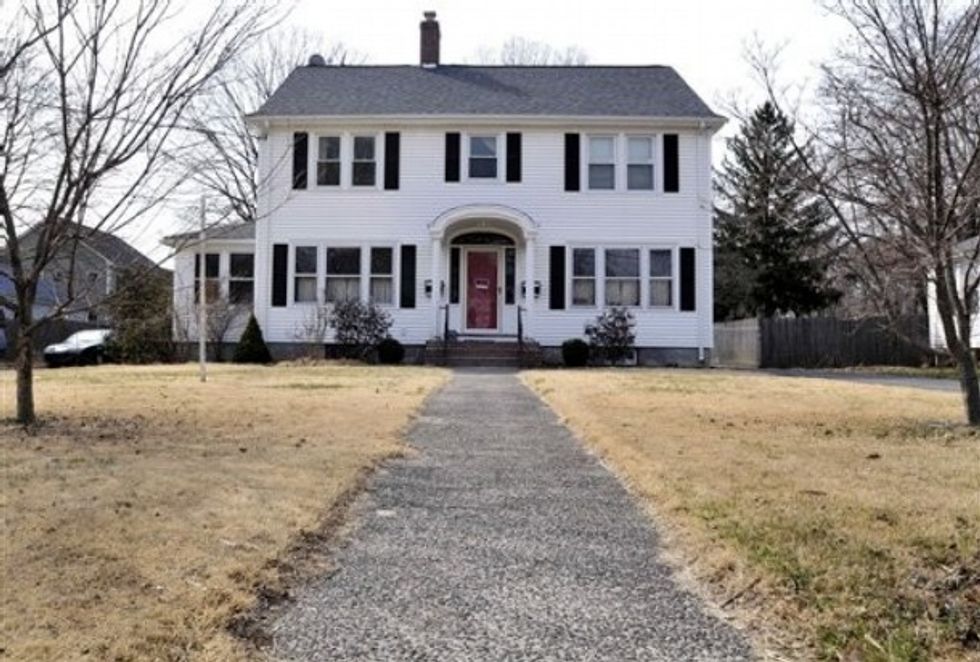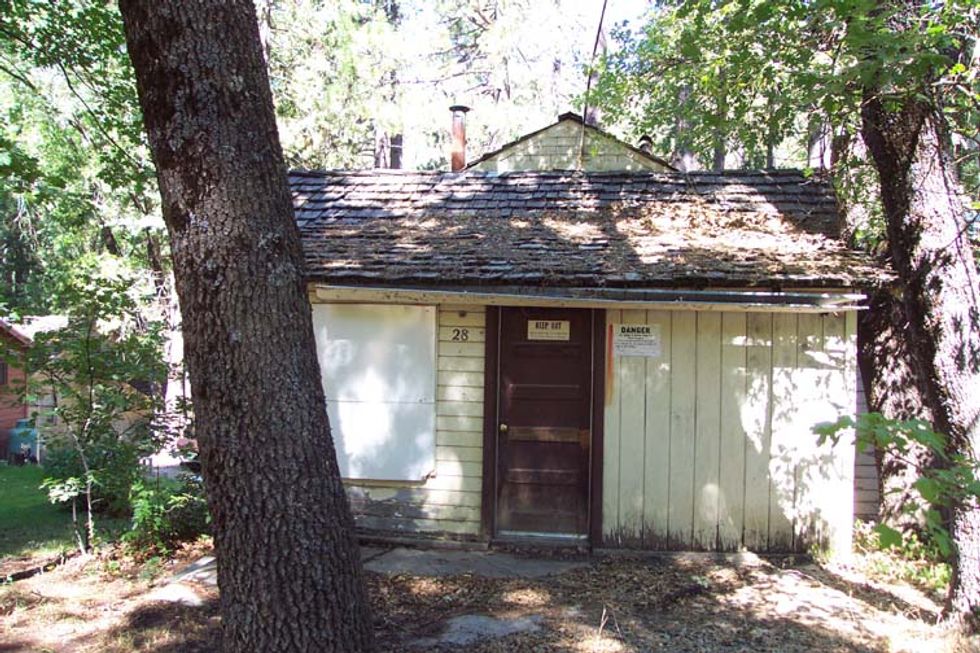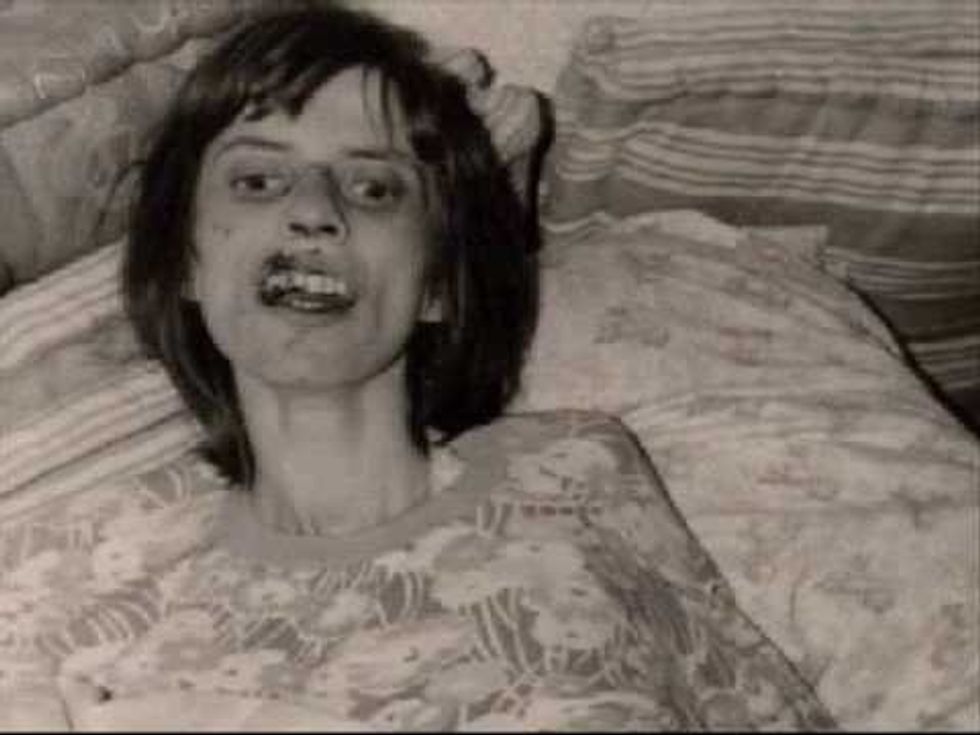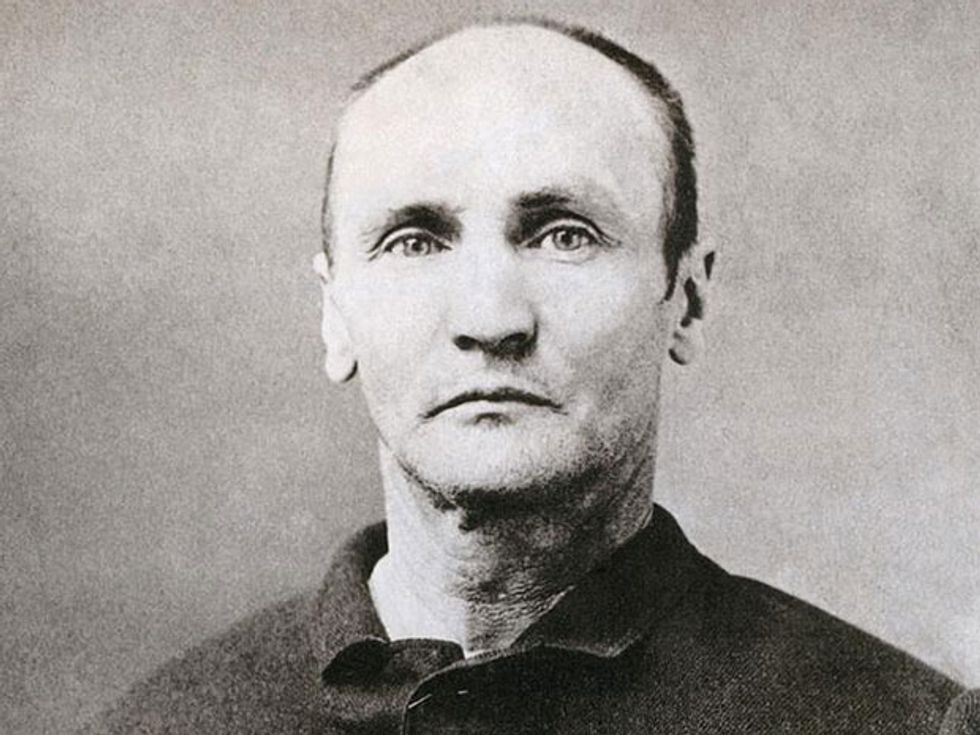Horror is my favorite movie genre. True crime writing is what I want to do as my career. Because of this, it was natural of me to recognize similarities in a few movies to real life crimes and serial killers. Here's thirteen horror movies that are based on true events (some are more dramatized than others). Spooky.
1. "The Exorcist"
"The Exorcist" is based on the 1949 case of fourteen year old "John Doe" (name changed for privacy) who was possessed by a demon. Father Albert Hughes performed the exorcism and Father Raymond Bishop kept a journal of the events.
Reports of the sessions in the journal included things such as the bad shaking, furniture moving across the room, an image of the devil appearing on his leg, and Ronald shaking so hard he had to be held down by three men. Although these events have been corroborated by witnesses at the time, it is theorized that the boy could've easily suffered from an undiagnosed case of schizophrenia or Tourette's Syndrome. Since little was known about either condition at the time, a label of "possessed" was easily offered.
2. "Silence of the Lambs"
The life of serial killer Ed Gein, pictured above, has been depicted on the big screen in a number of movies such as "Psycho", "The Texas Chainsaw Massacre" and "The Silence of the Lambs." Although the house in "The Texas Chainsaw" is almost an exact replica of the Gein's home where the murders took place and where his victims were kept, "The Silence of the Lambs" encompasses his persona and motives the best.
Much like the character Buffalo Bill in the movie, Gein desired to be a woman so much so that he would skin his victims post partum and parade around in them in public. One of the few differences between the movie and real life events is the victim profile; Buffalo Bill targeted women significantly younger than Gein's victims.
3. "Nightmare on Elm Street"
As crazy as it sounds for someone to die "in their sleep," it has actually happened. Nightmare on Elm Street is based on a family who survived the "Killing Fields" in Cambodia. The "Killing Fields" is commonly identified present day as the wall made of 8,000 human skulls.
The history behind it is gruesome; Khmer Rouge murdered thousands of people in the late 1970's, including children. The boy of the family who survived the attacks informed his parents he was having haunting nightmares when they returned to the United States. He was so terrified of these nightmares that he would often stay awake for days on end. He claimed someone or something was chasing him in his sleep.
One night, he finally fell asleep; shortly after, his parents were awoken by screams. It was too late; the boy died in his sleep. Four slash marks were also found on his chest. However, there was no sign of forced entry. The nights events have yet to be explained.
4. "The Amityville Horror"
"The Amityville Horror" is loosely based on the crimes of 23-year-old Ronald "Butch" DeFeo Jr. On November 13, 1974, DeFeo Jr. murdered his parents, two brothers and two sisters in their own home while they slept. Much like the movie, DeFeo Jr. claimed he had been hearing voices for weeks prior to the crime that told him to do it.
5. The Girl Next Door
The Girl Next Door is a shockingly accurate depiction of the murder of Sylvia Likens. The crime was so shocking and gruesome, it still maintains the title of "most terrible crime of Indiana". On October 26, 1965, the body of 16-year-old Sylvia was found on a dirty, soiled mattress in the basement of her home with the words, "I'm a prostitute and I'm proud of it" carved on her stomach.
She had 150 wounds raging from cigarette burns to cuts from knives and other sharp objects. The ultimate causes of death were malnutrition, shock and brain hemorrhaging. In addition, she had also suffered severe sexual abuse. The public and authorities alike were shocked to learn her abuse was at the hands of her own mother Gertrude Baniszewski. With the help of her children and other kids in the neighborhood, Baniszewski tortured Sylvia for years.
6. "The Conjuring"
Real life demonologists and paranormal experts, Ed and Lorraine Warren (pictured above), have both stated the case featured in the movie "The Conjuring" was their most difficult case to date and continued to haunt them post-completion. Lorraine was unfortunately the only one alive for the production of the movie and had significant influence on it, assuring it was as close to the truth as possible.
The case involved the Perron family, Roger and Carolyn Perron and their five daughters, in an 18th century Rhode Island farmhouse. Andrea Perron, the eldest of the daughters has confirmed the events shown in the movie are accurate. One report in particular stated she witnessed her mother talking in a deep voice not her own and her chair levitating/throwing her across the room. Ed and Lorraine Warren both admitted they had never seen a demonic hold on a family or house so strong in their history of paranormal discoveries.
7. "The Rite"
Father Gary Thomas (pictured above) was a priest in San Jose, California and one of the inspirations for the movie "The Rite." The second inspiration is author Matt Baglio, an American Journalist who wrote "The Rite: The Making of a Modern Exorcist" in 2009. Baglio followed Father Gary Thomas to Rome where the priest was apprenticing to perform his own exorcisms in America. Baglio witnessed Father Gary Thomas perform over 80 exorcisms in Rome. Both the priest and author served as consultants for the film to ensure its accuracy.
8. "Borderland"
"Borderland" is based on the life of cult leader Adolfo Constanzo of Mexico City, Mexico. He and his followers are responsible for multiple sadistic, ritualistic murders. He started as a witch doctor for gangs in Mexico City in 1983; he would perform sacrifices of exotic animals such as zebras, snakes and lion cubs to evoke spells of good luck and blessings for the gangs. He gained respect from drug lords and corrupt government officials due to the level of violence of his sacrifices.
It wasn't long before Constanzo and his growing following turned their attention away from animal sacrifices and moved to humans. The victims of such sacrifices were often dismembered or skinned alive to ensure the maximum amount of pain possible.
Authorities didn't look in the direction of the cult leader until American college student Mark Killroy disappeared. The U.S. police force pressured Mexican authorities to raid the ranch Constanzo owned in hopes of finding anything that would lead to the whereabouts of the student. The authorities were shocked to unearth the remains of over fifteen mutilated bodies buried around Rancho Santo Elena.
9. "The Haunting in Connecticut"
"The Haunting in Connecticut" is based on the life of the Snedeker family. They rented an old home in Southington, Connecticut in 1986 and shortly thereafter, reported being terrorized by spirits. Unbeknownst to them at the time, the family had moved into a home that used to serve as a funeral parlor. Tools used by morticians were found in the basement.
Their eldest son claimed to see ghosts and evil visions at night and both parents claimed to have been raped and sodomized by the ghosts in their sleep. Paranormal experts, Ed and Lorraine Warren, dubbed the house possessed, and the family evacuated the property.
10. "The Strangers"
The movie "The Strangers" is said to be influenced by both the Manson murders and the Keddie Cabin murders. Although the senseless home invasions/murdering acts Charles Manson's followers performed are similar to the killings in "The Strangers," the actual method of killing is eerily similar to the little known cold case that occurred at the Keddie Cabin on April 11, 1981, in California.
Sue Sharp and her five kids escaped from an abusive father/husband and fled to California. The eldest daughter, Sheila Sharp, returned home the morning of April 12 from a sleepover at a friends house to get clothes to wear to church that morning. She was met with a blood bath of a crime scene. She discovered the bodies of her mother, her oldest brother Johnny and his friend Dana. A table knife, bloody hammer and butcher knife were found near the bodies.
Sheila's youngest sister, Tina, was missing from the home; a human skull found three years later in 1984 was confirmed to be hers. In the movie, the couple is tied to chairs and tortured with knives; authorities speculate the exact thing also occurred in the Keddie Cabin on the night of April 11. The crime has never been solved.
11. "The Exorcism of Emily Rose"
"The Exorcism of Emily Rose" is eerily similar to the case of Annelise Michel. Her possession was so strong it took almost a year to complete the exorcism. Annelise began to suffer from convulsions in high school at the age of 17. She had her first epileptic attack in 1969 and was diagnosed with epilepsy shortly thereafter. She complained to her parents about "devilish hallucinations" that occurred when she would pray. In 1973, she claimed she heard voices telling her she was damned to hell; in the same year she was diagnosed as suicidal and suffering from depression. Finally in 1975, her parents sought religious help, fearing their daughter was possessed by a demon.
Character Father Moore in the movie is based on real life Father Arnold Renz and Pastor Ernst Alt, who were both assigned by the bishop to perform the exorcism on Annelise. She endured 67 rites of exorcism over a course of ten weeks; that means she was going through one to two exorcisms a week, some that lasted up to four hours. Annelise died of severe dehydration and malnourishment on July 1, 1976. Both priests and her parents were found guilty of negligent homicide.
Annelise's last words before death were to her mother, Anna Michel, "Mother, I'm afraid."
12. "Eaten Alive"
The movie "Eaten Alive" is loosely based on the killings of Joe Ball in 1977, who killed his victims and fed their remains to the alligators he kept in a pool next to the bar he owned.
Fun fact: the director of this movie is the same one as that of "The Texas Chainsaw Massacre."
In 2002, journalist Michael Hall traveled to Elemendorf, Texas to further investigate the crimes of Joe Ball. He is linked to the disappearances of three women, all who were either employed at the bar he owned or were intimately involved with Ball, who was labeled a womanizer of the time.
13. "Ravenous"
Cannibal Alfred Packer was the inspiration behind the movie "Ravenous." Packer lived in the Rocky Mountains after being discharged from the military. He joined a group of five men looking for refuge at the Los Pinos Indian Agency. The group headed out on February 9, 1874, with enough provisions for ten days. The group never arrived at the agency and were presumed missing.
Over a month later, on April 16, Packer showed up at the agency alone. He was described as looking "too fit" for a man who was presumed lost in the wilderness with no food or water. When questioned about the other four men, Packer simply said they left him behind. However, after being caught using the knife of one of the missing men and spending large amounts of money on supplies, Packer broke down and confessed that the men began to each other one by one as they died.

